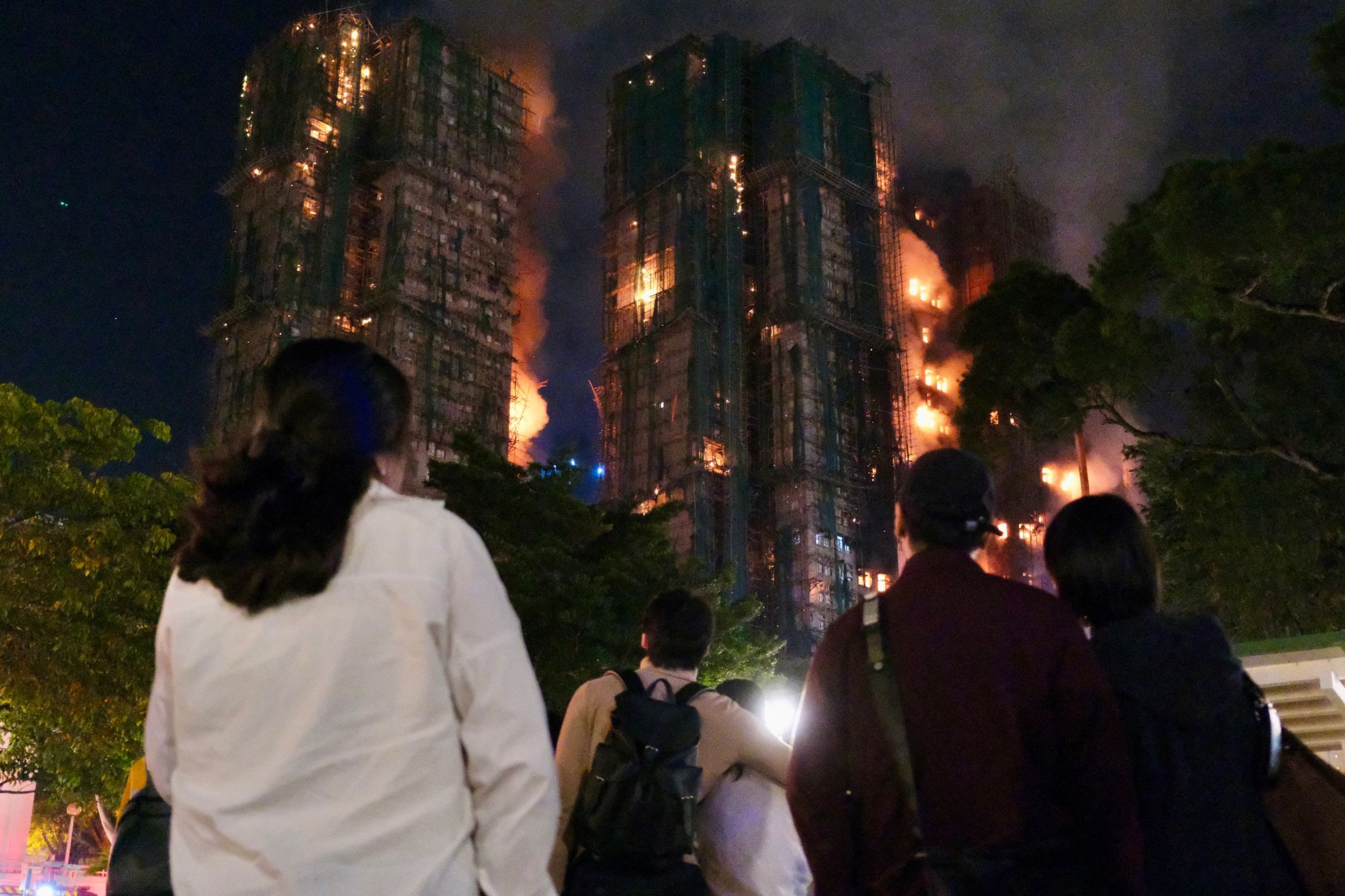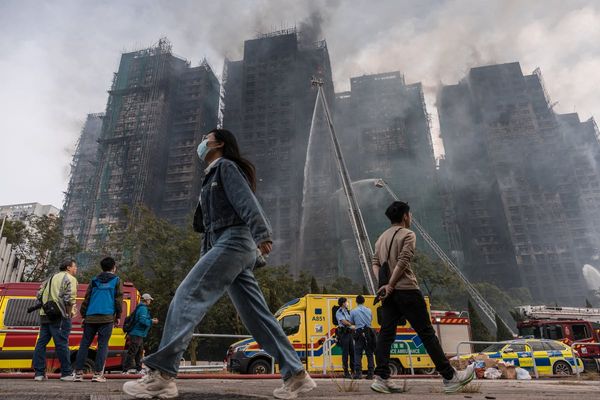The towering inferno that burnt down multiple high-rises and killed dozens of people in Hong Kong was fuelled by highly flammable scaffolding material, fire safety experts said.
At least 44 people died and nearly 280 were missing after a fire tore through several densely populated apartment blocks at the Wang Fuk Court residential estate in Hong Kong's Tai Po district on Wednesday.
The death toll is the highest in a fire in Hong Kong since World War II, surpassing the 41 killed in a commercial building fire in the Kowloon district in 1996.
With winds fanning the flames leaping out of seven buildings, the fire was not expected to be brought under control until the end of the day on Thursday.
A concoction of factors led to the blazing inferno, including the dense development of the northern Tai Po district, home to 2,000 apartments in eight blocks housing over 4,600 people, experts said.
A key factor was the flammable nature of the bamboo and plastic scaffolding covering the buildings, according to fire safety engineers.
“The fire spread at the Wang Fuk Court housing complex is likely due to a combination of factors, including the plastic scaffolding encapsulation, plastic sheeting, polystyrene, the bamboo structural scaffolding, and any other flammable components,” said Alex Webb, a fire safety engineer at Australia’s CSIRO.

In the wake of the fire, Hong Kong authorities arrested three men from a construction company, including its two directors and an engineering consultant, on suspicion of manslaughter.
"We have reason to believe that the company’s responsible parties were grossly negligent, which led to this accident and caused the fire to spread uncontrollably, resulting in major casualties," police superintendent Eileen Chung said.
The incident immediately drew comparisons to the 2017 London Grenfell Tower inferno that killed 72 people.
Experts called for strict oversight of construction materials in such densely populated cities, including the use of fire-resistant scaffolding systems.
In the case of the Hong Kong inferno, the use of highly flammable bamboo scaffolding in particular caused the rapid spread of fire, they said.
“Many factors could have contributed to this, including the scaffolding, which may have provided a 'highway' for the fire to travel vertically, and a warm nest for embers from adjacent structures to ignite,” said Anwar Orabi, a fire safety engineering lecturer at The University of Queensland.
“The bamboo scaffold acted as a continuous external fuel path. Dry culms have high surface-area-to-mass ratios and, when wrapped with plastic mesh, create a ventilated ‘chimney’ that supports rapid flame spread,” added Ehsan Noroozinejad, a specialist in smart resilient construction at Western Sydney University.

Engineers called for replacing bamboo scaffolding with a metal one to prevent such disasters in the future.
“Mitigating this fire risk is feasible, as metal scaffolding has long been used in many countries and could readily be adopted. By eliminating the use of bamboo scaffolding, the risk of extensive building damage and human fatalities could be dramatically reduced,” said professor Guan Yeoh from the University of New South Wales.
"It’s time for change - to remove outdated practices and adopt modern methods of fire safety and protection. Bamboo scaffolding is highly flammable, and strict building regulations should be imposed to ban its use,” Dr Yeoh, an expert in fire-resilient infrastructure, added.
At least 44 killed and hundreds missing after inferno rips through Hong Kong flats
Hong Kong fire latest: Death toll rises to 44 as search continues for survivors
Hong Kong’s devastating fire must spell the end of bamboo scaffolding
Rare protest breaks out in China as video shows villagers defying government order
Indian woman living in UK detained for 18 hours at China airport over border dispute
China launches emergency rescue mission for stranded astronauts







